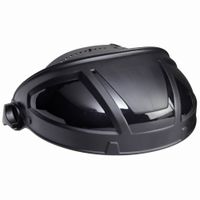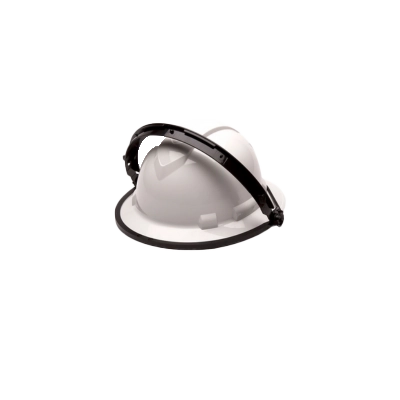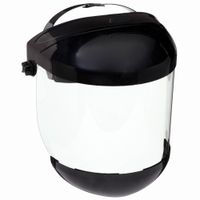Call +(254) 703 030 000 / 751 483 999 / 721 704 777
- Home
- Safety
- Face Protection
- Face Shields
.....Read More
Frequently Asked Questions
What are face shields used for?
Face shields are personal protective equipment (PPE) designed to protect the wearer's face from hazards. They are primarily used in healthcare settings to provide a barrier against infectious agents, such as viruses and bacteria, that can be transmitted through respiratory droplets. By covering the entire face, including the eyes, nose, and mouth, face shields help prevent exposure to bodily fluids, blood splashes, and other potentially infectious materials.
In addition to healthcare, face shields are used in various industrial and laboratory environments to protect against chemical splashes, flying debris, and other physical hazards. Workers in construction, manufacturing, and laboratories often wear face shields to safeguard against particles, sparks, and harmful substances that could cause injury.
Face shields are also utilized in educational and public settings, especially during pandemics, to reduce the spread of infectious diseases. They are often worn in conjunction with face masks to enhance protection, as they provide an additional layer of defense against airborne particles.
Moreover, face shields are used in sports and recreational activities to protect against impact and injury. For example, in sports like hockey and lacrosse, players wear face shields to shield their faces from high-speed pucks or balls.
Overall, face shields serve as a versatile protective tool across various sectors, offering a clear, durable barrier that helps minimize the risk of exposure to harmful substances and physical injuries.
How do face shields protect workers?
Face shields protect workers by providing a physical barrier that covers the face, including the eyes, nose, and mouth, from potential hazards. They are particularly effective in environments where there is a risk of exposure to splashes, sprays, or droplets of hazardous substances, such as chemicals, infectious agents, or bodily fluids. The shield acts as a protective layer that prevents these substances from coming into direct contact with the face, thereby reducing the risk of infection or injury.
In addition to protecting against liquid splashes, face shields also offer protection from flying debris, dust, and other particulate matter that could cause harm to the eyes or skin. This is especially important in industrial settings, such as construction sites or manufacturing plants, where workers are exposed to physical hazards.
Face shields are typically made from durable, transparent materials like polycarbonate or PET, which provide clear visibility while ensuring robust protection. They are designed to be worn over other personal protective equipment (PPE), such as masks or goggles, to enhance overall safety. The adjustable headband and comfortable fit allow for prolonged use without causing discomfort, making them suitable for long shifts.
Moreover, face shields are easy to clean and disinfect, which is crucial in maintaining hygiene and preventing cross-contamination in healthcare settings. They can be reused multiple times, provided they are properly sanitized between uses.
Overall, face shields are an essential component of PPE for workers in various industries, offering comprehensive protection against a range of occupational hazards while allowing for clear communication and visibility.
Can face shields be worn over safety glasses or goggles?
Yes, face shields can be worn over safety glasses or goggles. This combination provides enhanced protection for the eyes and face, especially in environments where there is a risk of exposure to flying debris, chemical splashes, or infectious materials. Safety glasses or goggles offer direct eye protection, while face shields provide a barrier for the entire face. When used together, they ensure comprehensive coverage, reducing the risk of injury or contamination. It's important to ensure that both the face shield and the eyewear fit properly and do not interfere with each other to maintain comfort and effectiveness.
When is it necessary to wear a face shield?
A face shield is necessary in situations where there is a high risk of exposure to infectious agents, hazardous materials, or physical debris that could impact the face. In healthcare settings, face shields are crucial when treating patients with contagious diseases, as they provide a barrier against respiratory droplets that may contain viruses or bacteria. They are often used in conjunction with masks for enhanced protection.
In industrial or construction environments, face shields are essential when working with materials that could cause facial injuries, such as flying debris, chemical splashes, or sparks from welding. They protect against physical hazards and are often part of personal protective equipment (PPE) protocols.
Face shields are also necessary in laboratory settings where there is a risk of exposure to harmful chemicals or biological agents. They provide a clear barrier that protects the eyes, nose, and mouth from splashes and spills.
In educational or training scenarios involving demonstrations of potentially hazardous activities, face shields can be used to ensure the safety of both the demonstrator and the audience.
During pandemics or outbreaks, face shields may be recommended for the general public in crowded or high-risk areas to reduce the transmission of infectious diseases, especially when social distancing is not feasible.
Overall, the necessity of wearing a face shield depends on the specific risks present in the environment and the level of protection required to ensure safety.
Do face shields provide protection against flying debris?
Face shields provide a level of protection against flying debris, but their effectiveness depends on the type and velocity of the debris. They are designed to protect the face from splashes, sprays, and some impact hazards, making them suitable for environments where there is a risk of exposure to non-penetrating debris.
Face shields are typically made from durable, impact-resistant materials like polycarbonate, which can withstand certain levels of force. They cover the entire face, offering a barrier against debris that might otherwise cause injury to the eyes, nose, and mouth. However, they are not foolproof. For high-velocity debris or sharp objects, face shields alone may not provide adequate protection. In such cases, additional protective gear, such as safety goggles or glasses, should be worn underneath the shield to protect the eyes specifically.
The design of a face shield also plays a role in its protective capabilities. A well-fitted shield that wraps around the sides of the face and extends below the chin offers better protection than a flat shield. However, gaps can still exist, especially around the sides and bottom, where debris might enter.
In industrial or construction settings, where the risk of flying debris is higher, face shields are often used in conjunction with other personal protective equipment (PPE), such as hard hats and respirators, to provide comprehensive protection. It's important to assess the specific hazards of a work environment to determine the appropriate level of protection needed.
In summary, while face shields do offer protection against flying debris, their effectiveness is limited by the nature of the debris and the design of the shield. For optimal safety, they should be used as part of a broader PPE strategy.
How do face shields attach to hard hats?
Face shields attach to hard hats using a variety of mechanisms designed to ensure stability, ease of use, and compatibility with different hard hat models. The most common attachment methods include:
1. **Brackets and Adapters**: These are intermediary components that connect the face shield to the hard hat. The bracket is typically mounted on the hard hat's brim, and the face shield is then attached to the bracket. This setup allows for easy raising and lowering of the shield.
2. **Slot Mounting**: Many hard hats come with built-in accessory slots on the sides. Face shields designed for slot mounting have clips or tabs that fit into these slots, securing the shield in place. This method is quick and does not require additional tools.
3. **Headband or Strap Systems**: Some face shields come with an adjustable headband or strap that wraps around the hard hat. This system can be used with hard hats that do not have slots or when a more universal fit is needed.
4. **Snap-On Systems**: These systems use snap-on connectors that attach directly to the hard hat. They provide a secure fit and are easy to remove when the face shield is not needed.
5. **Visor Carriers**: A visor carrier is a frame that holds the face shield and attaches to the hard hat. It often includes a hinge mechanism, allowing the shield to be flipped up when not in use.
Each attachment method is designed to ensure that the face shield remains securely in place during use, providing protection against debris, splashes, and other hazards. Compatibility between the face shield and hard hat is crucial, so it's important to select products that are designed to work together or are from the same manufacturer.
Are face shields effective for both eye and face protection?
Face shields are effective for providing a barrier against splashes, sprays, and droplets, offering protection for both the eyes and face. They cover the entire face, extending from the forehead to below the chin and wrapping around the sides of the face, which helps in preventing infectious materials from reaching the mucous membranes of the eyes, nose, and mouth. This makes them particularly useful in environments where there is a risk of exposure to bodily fluids or hazardous substances.
However, face shields alone are not sufficient for complete protection against airborne particles. They do not provide a tight seal around the face, allowing small aerosolized particles to be inhaled from the sides or bottom. Therefore, while they are effective in blocking larger droplets, they should be used in conjunction with other protective measures, such as masks, to enhance overall protection, especially in situations with a high risk of airborne transmission.
In terms of eye protection, face shields are advantageous because they do not fog up as easily as goggles and offer a more comfortable fit for extended wear. They also allow for clear visibility and communication, which is beneficial in healthcare and other professional settings.
In summary, face shields are effective for protecting against splashes and large droplets, providing a barrier for both the eyes and face. However, for comprehensive protection, especially against airborne particles, they should be used alongside other protective equipment like masks.





